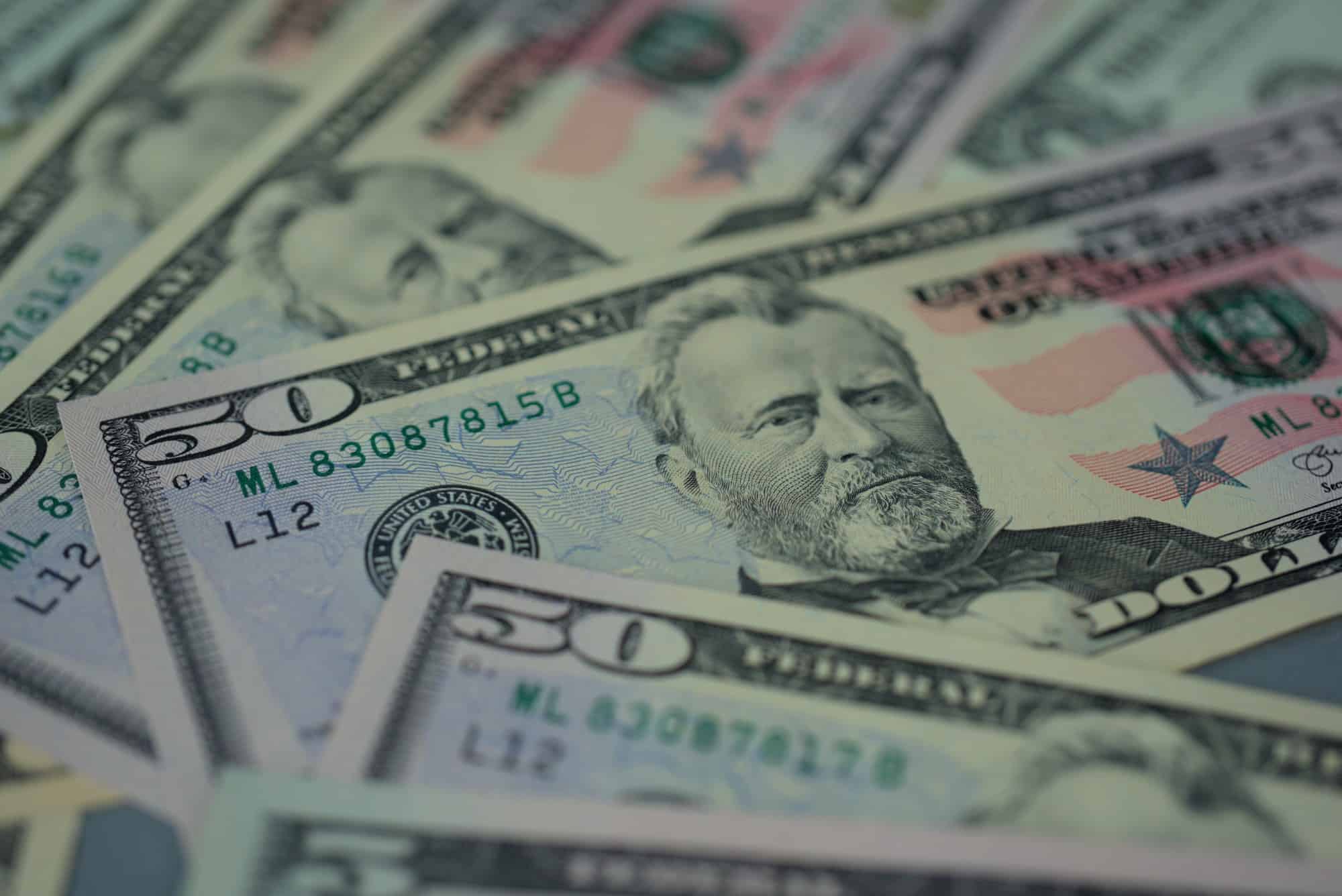There’s a reason that a distinction is made between banks and other financial institutions. In addition to clever marketing, it’s also about intent. A financial institution works to help people sort and manage finances, banks work at collecting money.
Few places express this difference in ideology quite like the use of overdraft fees. But what are overdraft fees? When did they come into being and how can you navigate them?
These are all excellent questions that the fiscally responsible confront. These questions aren’t particularly new either. The first overdrafts were offered way back in 1728 by the Royal Bank of Scotland.
The early offering works somewhat differently than the current one but it’s a start.
What Are Overdraft Fees?
Unlike other banking fees, which exist as a part of doing business, overdraft charges are more often a penalty cost.
When you reach a negative balance in an account, either because of a purchase or even sometimes other fees, the bank charges you a fee to cover the expense. This service can be valuable and help consumers, in theory.
In practice, it often costs more than it saves and indeed sits as the largest chunk of fees paid by American consumers each year. collectively, $34.34 billion in overdraft fees were paid in 2017. This was one of the highest years since regulation changes came down to limit charges in 2009.
The Consumer Financial Protection Bureau (CFPB) found that, on average, consumers spend much more on overdraft as they did all other banking fees combined.
This occurs from a combination of two factors. First, overdraft charges are among the highest, if not the highest, fees a bank charges. Second, they can be charged more than once, and in some cases, daily.
How do Overdraft Fees Work?
Typically an overdraft fee occurs when an account goes below zero. Purchases well beyond the typical amount in the account may be flagged for fraud or stopped rather than honored. Keep in mind, each unique bank has a different policy on this.
If the bank honors the transaction, it charges a fee and also charges against your account for the favor. If the bank doesn’t honor the charge, it can charge a non-sufficient funds (NFS) fee. Insufficient funds fees also range but are cheaper than overdraft on average.
With non-sufficient funds (sometimes insufficient funds) you can also get a charge from whatever entity you were paying. For a purchase, this will likely be a decline for the purchase. For something like a utility or rent, you can see late fees and chargeback fees added.
Nobody likes to make a mistake and end up unable to buy something or to see a bill they thought they had covered stack up.
Once an overdraft occurs, you need to pay the fee and bring the account balance back above zero. If you add funds to cover the charge, but not the overdraft, your account can receive further overdraft fees weekly or even daily until the balance gets above zero.
Overdraft is more of a solution in search of a problem. Careful management of personal finances is a far better way to protect consumers and help them spend safely.
Instances of Fees
Not all charges come from a single source and banks handle each source somewhat differently.
ATM overdraft is a blind alley. The ATM can’t deny a charge for insufficient balance if you have overdraft set up but have it limited to warn you of an insufficiency before charging.
A bank can issue a different charge for an intentional loan. This is when you write a check to yourself for the max of what your overdraft covers. This isn’t a good idea, as the fee outstrips most interest rates for a loan.
Authorization holds are one of the hardest to take into account. If you write a tip on a debit transaction with a restaurant or other service, the money is held for permission but may not be available. When the process complete (usually in five business days) you face an overdraft for the added amount.
Other bank fees charged against your balance can create an overdraft.
Phishing schemes and fraud attempts are rare but happen. In these instances a single penny is charged to a variety of numbers over and over, hoping to drain an account before being flagged. Like other frauds, this is one place where even a delinquent customer can request fee waivers and hope to have them removed.
Typical Fee Size
Fees vary from one bank to another but average around $34. The CFPB learned that the majority of charges that trigger an overdraft total $24 or below. These overages are, on average, paid back within three days. So for a charge of $24 or less, people pay an additional $102 in protection fees.
Some banks allow some wiggle room, covering charges under $5 to be covered without charging a fee.
Here’s a quick list of fees by the bank for the most popular banks.
- Alliant Credit Union $28
- Ally Bank $25
- Associated Bank $35
- Bank of America $35
- BB&T $36
- BBVA $38
- BMO Harris Bank $36
- Boeing Employees Credit Union $25
- Chase $34
- Citibank $34
- Citizens Bank $35
- Comerica Up to $38
- Connexus Credit Union $29.95
- Consumers Credit Union $30
- Fifth Third Bank $37
- HSBC Bank $35
- KeyBank $39
- M&T Bank $38.50
- Navy Federal Credit Union $20
- PNC Bank $36
- Regions Bank $36
- Santander Bank $35
- SunTrust $36
- TD Bank $35
- Union Bank $33
- USAA $29
- U.S. Bank $36
- Wells Fargo $35
The number of fees possible per day and the maximum amount charged also differ.
How to Get Fees Waived
After the housing bubble and the financial crisis in 2008, banks were under pressure to change how they administered their overdraft policies. Right now, with the threat of COVID-19 causing unemployment numbers to rise, many banks are waiving overdraft fees to help consumers.
Since 2010, banks have been more careful to explain their overdraft policies and to make them opt-in rather than opt-out. One problem that was also dealt with was how often opt-out could be revised and a consumer could opt-in again without expressly stating as such.
Clauses in account agreements could start overdraft fees and programs again if an account holder attempted charges on a zero balance account a few times per month.
Charges were also being pooled and executed by banks at the end of the day, rather than as they occurred. Bank software was found to be programmed to pool charges and then charge off from the account largest to smallest. This meant that if you miscalculated your balance by as little as $0.02 across two charges, they could hit you with two overdraft fees.
With pressure to keep customers, banks now offer more plain language, limits to the number of charges per day, limits to the total that overdraft charges, and ways to have fees removed.
Forgiveness Policies
The first step for banks to get consumers to not outright ban overdraft language was to offer policies on forgiveness. These typically include a once-a-year or once-a-quarter timing that allows you to request charge removal.
Like many policies with a bank, the more money you tend to move through your account, the more likely they are to bend some rules to keep you happy.
Account History
Much like insurance companies, banks also figure out that catering to accounts with a good history made for good business.
If you have a history of compliance to rules and your balance doesn’t frequently dip below zero, the bank is likely to remove a fee or two. Having a good account history isn’t an accident, it takes work and planning. Check out our tips on setting a budget for 2020.
In both cases, contacting the bank’s customer service and asking for the fee to be removed is necessary. They won’t alert you (more on that later) to the fee or offer to remove it upfront.
Rewind Programs
A rewind program offers a window of time for you to make a deposit to cover the overdraft and prevent the charge. This isn’t the same as a secondary funding source or transfer.
With a rewind program, you add money to your account (electronically or in cash) to cover the amount that was overdrawn. These programs tend to stipulate a ‘before the next business day’ for receiving funds to remove fees.
Purpose of Fees
As given in our original example of overdraft from 1728, the idea behind overdraft made sense. So much sense that it became the type of charge card that was American Express for years. You spend money you don’t have now with the intent of paying it back by the end of the month.
Many small businesses run on this type of spend, pay, and spend again system.
The problem is in the current intent of overdraft which is largely to charge fees. This is the intent to such an extent that there are multiple types of fees under the overdraft canopy. We’ve covered the overdraft fees so here are the other three.
NSF Fee
We also touched on this fee, the NSF fee is charged when the bank rejects a charge. These fees tend to be close to the amount you would pay in overdraft but with the added headache of the charge not going through.
By keeping the NSF fee close to or matching the overdraft fee, banks incentivize consumers to take what seems like the safer option of overdraft protection.
Overdraft Protection
Overdraft protection isn’t the same as an overdraft fee and tends to only charge once. Rather than cover the charge and then issue a fee, the bank charges a protection fee to draw on an additional linked funding source. This can be another bank account or you can set it up to work with a line of credit.
A hidden additional cost here, if you do use a credit card as a linked funding source, the bank may charge as a cash advance. This limits what can be pulled from the overdraft line of credit (most offer only a fraction in cash advance) and also forces you to pay additional fees on the credit card side.
Extended Overdraft Fee
The final type of overdraft fee comes later. When you carry a negative balance for more than a few days banks can charge an additional extended overdraft fee as a penalty for not clearing up the original balance.
These fees have been under additional scrutiny since 2014 and are now more limited in how often and how many times they are charged.
What About Credit Unions?
Credit unions have their own fees and policies regarding overdrafts. In many cases, the fees they charge are smaller and overdraft is allowed fewer times per day.
In other cases, no overdraft is offered at all. It isn’t something you can opt-in on even if you want it.
Overdraft Fees and Credit Reports
Overdrafts don’t show up as a negative on a credit report unless the account itself becomes delinquent. If you close an account with a negative balance on it, the bank can report the balance as a collection. Once a bank reports your account that will affect your credit score.
Banks also use a proprietary system to confirm if you have delinquent accounts with other banks. If left unattended you will have to wait seven years for the incident to clear. This isn’t too dissimilar to bankruptcy rules.
Apps to Track and Stop Overdraft Fees
It’s advised that you check your balance frequently either online or through a mobile app to avoid overdrawing your account. Knowing your available balance before even small purchases can save you a lot of effort.
One way to go about this is to set your account (where possible) to alert you when the balance drops below a certain amount. Banks offer this feature in many online accounts but don’t offer to tell you when an overdraft occurs.
As with many cost-saving measures, the onus is on you to be aware of the options.
Knowledge is Vigilance
Dealing with overdraft fees is a bit of a labyrinth. The best way to keep in command of your finances and save money is to always be expanding your knowledge.



